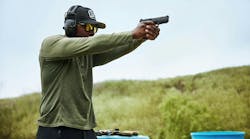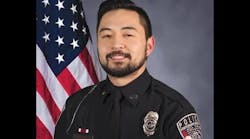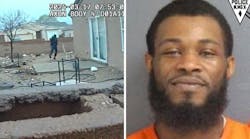There are only two things an officer can be sure of when it comes to mutual aid requests: (1) An officer never knows when the call will come; and (2) Assisting another agency during an emergency is anything but routine.
Mutual aid is an intergovernmental agreement to assist another agency during a disaster, civil unrest or incident that requires participation outside of the agency with original jurisdiction. It differs from routine assistance by the nature of the emergency and the level of administration that fields the request.
Mutual aid can be composed of interagency informal agreements where two or more agencies have had habitual relationships, such as a county that adjoins a tribal area, or formal arrangements like a deliberate activation of a NIMS (National Incident Management System) in compliance with HSPD-5 (Homeland Security Presidential Directive). One of the primary goals of mutual aid planning is efficient resource management. For a major event, this is facilitated by prepackaging components. For example, a pre-determined formula for resource-sharing in the event of a mutual aid request may read, "… if the response is a certain disaster declaration X, allied agencies should send a package X, which consists of two patrol cars, one supervisor or supervisory cell, a heavy rescue vehicle with crew and activate a Public Information Officer …"
Most agencies have policies which include provisions that indemnify the responding agency and responses only if requested by the agency in jurisdiction.
Resource typing — the grouping of disaster needs — drives this prepackaging. For the law enforcement administrator, the most important response to a major incident is the work done long before the incident arises. For the individual officer who ends up responding to a riot, flood, fire or major crime incident, it's no different; it all comes down to pre-planning.
Law Enforcement Technology contacted several law enforcement officers who routinely assist other agencies. The types of mutual aid responses for which they were dispatched varied and accordingly, so did the equipment needs. Based on their experience, we arranged the equipment needs into five major groups: navigation, communication, personal needs, transportation and documentation.
Officers identified four basic types of mutual aid assignments: disasters, including fires and floods; civil incidents, including civil disorder, events that require crowd control or civil operations for missing victims (where an immediate wide-scale search is necessary); and major crimes, including active shooters and acts of terrorism. In each, the mission exceeds the local agency's capacity to resolve the problem.
NavigationObviously, one of the first problems arriving officers encounter is getting around unfamiliar territory in a timely manner. If the responding agency was afforded enough time to do its homework, some maps would have been allocated. The requesting agency almost always will put maps, information packets and a phone list into the officer's hands when he arrives. After all, the mutual aid officer is a guest and hospitality is a must.
Technology has improved navigation considerably. Studies at the University of California at Berkeley have recently supported the feasibility of GPS-enabled cell phones anonymously reporting real-time traffic information. New products like the Nokia N95 use Nokia Maps 2.0 — which integrates a full-featured cell phone and a GPS — are a sign of the times. It could be that cell phones with GPS mapping may someday become common.
Supported units should create a confidential cell phone list for all officers. Routine or non-sensitive communications that can be legally sent over text messages should be, because this allows for quick disbursement of the same memo to all recipients. Cell phones also can be used to send pictures from the scene to responders.
We began investigating devices to enhance the efficiency of mutual aid officers. In the GPS field, our first stop was with the Magellan CrossoverGPS.
GPS units that come standard with street maps in their databases are becoming more common. They have large, easily readable and colorful displays, and differ from the GPS units designed for outdoor topographic map use. Most of them do either one or the other, but not both.
Not only does the Magellan CrossoverGPS do outdoor, road map and marine navigation, it will render a 2D or 3D view of the map and transition between these perspectives seamlessly. This is advantageous if the operation quickly transitions from city borders to out in the boondocks. Almost shirt-pocket sized, it is capable of displaying the entire continent of North America in either topographical or road-map version.
The Magellan CrossoverGPS has the standard database contents, which includes restaurants, police stations, parks and points of interest (POIs) preloaded with software to add other locations. It delivers reliable turn-by-turn voice navigation. We attempted to fool this instrument by going from city to mountainous terrain but it easily led us to selected grid coordinates or an address.
These integrated POIs are great for mutual aid but they're best for extradition. Officers can plan their driving routes and zoom out a little to identify potential problems while picking restaurants and quickly locating police headquarters along the way.
One can load preposition waypoints into the Magellan CrossoverGPS using an SD card, probably one of the cheapest and most reliable methods of updating electronic devices. If the agency requesting mutual aid gives this unit to a team at a disaster that covers a significant geographical location, they can quickly provide updates by swapping SD cards. If the disaster is a flood, fire or earthquake, reliable landmarks might be destroyed or obscured. The officer equipped with GPS technology will prevail.
Even at cruiser speeds the Magellan CrossoverGPS gave good directions. It charged quickly and easily in the vehicle, had a fairly reliable antenna system and a display with a high resolution, making it easier to read on the fly.
However, GPS is not perfect. Even though the Magellan CrossoverGPS has terrific maps, we still recommend good old paper maps and compasses so people can communicate ideas by sketching and officers can check a compass for cardinal directions and routes of travel. Additionally, GPS works really well outside unless the user is in a canyon or under solid tree cover.
The Suunto Core has an integrated compass and watch. It features a chronograph, barometer, altimeter and compass in addition to the second most important feature for a deployed officer: an alarm.
For every situation, officers should carry a pencil, gum eraser (they can erase on maps without abrading the printing) grease pencils and Sharpies (for writing on plastic-covered maps).
CommunicationEvery officer contacted mentioned some difficulty with radio compatibility. Usually it was something along the lines of having to use a local agencies handheld in the patrol car. As radio waves become more crowded, the problem is compounded.
Most agencies have some sort of interoperability with allied agencies. As they get out of the area, they often have to resort to statewide frequencies or systems.
Newer radio systems have cloning capabilities, allowing technicians to change incoming officers' trunking frequencies and controller channel in their radios simply by plugging them into a PC. However, there are other compatibility issues that can also come into play.
Radio compatibility should be on the officer's mind when responding. Every officer we contacted had that issue on their checklist. A cheat sheet is recommended that gives the exact model name and features of their department radios. They should also have a frequency list from their agency. They can notify the receiving agency before even embarking.
Administrators should consider the scanning capabilities of vehicle-mounted radios. If they do not cover a wide spectrum or fail to read trunking systems, the patrol car should have a separate scanner capable of receiving a wide spectrum, especially if there is a potential for any air support during the operation.
It should also be noted that not every agency uses the same abbreviation codes. Mutual aid policies should include instructions to use plain English during transmissions.
Another viable solution is to create response teams that consist of a local officer grouped with responding officers.
Officers should carry a portable personal strobe, especially in fire or flood areas, where flares can't be used. This is especially important for evacuations. For large evacuations, have evacuees form groups and give one of them a strobe.
Three strobes and a trained person is enough to mark a helicopter landing. If helicopters are involved in any way, always bring goggles. This is something that can be easily overlooked, but anyone who has experienced that situation without goggles can attest to the necessity.
Pelican makes a personal locator strobe that won't take up a lot of space. If the field kit is not large enough for several strobes, consider the personal locator feature of the Streamlight Sidewinder.
A chemical light or battery-powered glow stick can be used to mark a critical location. Carry a can of spray paint for daytime marking.
Personal needsThe officers we contacted reiterated the same point: Never rely on the agency asking for support to provide for incoming officers. After all, the agency in need is probably running in emergency mode. Officers should plan for sustained ops with their own resources.
Planning for sustained ops requires good pre-deployment dialogue. The stuff an officer carries for an assignment at headquarters varies greatly from the items necessary for a remote outpost detail. Normally, no one can say how long officers will be needed, but they can often give the officer an idea of how remote his or her assignment will be.
Officers should always carry an individual first aid kit that can fit in a cargo packet, a means to carry water, food that can be eaten cold and won't readily spoil, some form of portable shelter that does not require outside structures for support and cash.
Several officers mentioned carrying MREs (Meals Ready to Eat) because they don't require heat or refrigeration. This supply should be augmented by other low maintenance foods like cans of tuna and dried fruit.
As is with most enforcement assignments, a means for decontamination is important. While this can simply be a short section of hose and a nozzle, an alternative can be found in the Safetec Personal Clean Up Kit from Galls for sanitization. Officers should also carry a small packet of baby wipes or hand wipes, and thick, resealable sandwich bags, which can be purchased anywhere. These bags are also good for protecting a camera or notebook.
Shelter, in addition to a freestanding tent, also includes good rainwear. The best bet for an officer is a good Gore-Tex shell jacket that one can layer under in cold conditions.
Being deployed also means the potential for being off-duty away from home. Officers should have a good off-duty holster or another means of concealing a duty weapon such as the Bianchi model 4411 K.O.2000 Fanny Pack. Its stiffening backplate and neoprene slot allows for a quick and quiet draw.
Off-duty clothing should be machine washable and layerable for unpredictable weather or social situations.
Officers should carry at least $100 in cash, so they do not need to rely on ATM availability and are prepared for unpredictable circumstances.
Every officer we contacted mentioned CamelBak by name for hydration. Its product, the CamelBak Urban Assault Pack, is appropriate for deployment because it does traditional tactical duty like hold extra magazines and cleaning kits in addition to a line of reservoirs. It can also double as a durable laptop or portable office case. The side compartments were designed for CamelBak's line of performance hydration bottles. Above all, it can pass for a tactical or an everyday pack.
TransportationA note to the administrator: Even for a single officer responding, consider the SUV-type patrol vehicle. They hold more and have better ground clearance. Depending on the mission, an SUV with four-wheel drive might be better. If the mutual aid request has anything to do with rescue or evacuation, the ability to pull, tow or jump a vehicle is a plus.
If the mission is facilitated by an SUV, consider a chainsaw, Hi-Lift Jack, tow strap and shovel as part of the package.
Transporting passengers is one thing; transporting equipment is another. For cameras and any optics or electronics equipment, storage should be shock, waterproof and able to be locked to stationary objects like the Hardigg Storm Case.
EnforcementIf the agency seeking support uses electronic control devices (ECDs) in its policy — such as Taser or Stinger units — responders should carry extra cartridges. This should be augmented by extra nylon handcuffs, which are handy for other emergencies also.
Always carry a cleaning kit capable of servicing more than one caliber. The Otis Technology Inc. Deluxe Law Enforcement Cleaning System covers small caliber pocket guns all the way up to shotguns in a cargo pocket-sized package.
Night vision equipment should be provided for rescue or enforcement roles. It is better to send officers with thermal devices to any mutual aid. For fires and disasters, they can be used to locate persons. For other circumstances, they can be used to locate hazards. For civil disturbances, they are priceless.
The powerful tactical lights are great for patrol use, but many mutual aid missions require task lights. However, if officers had to carry all the different specialized types of lights, they wouldn't have room for anything else.
Two recently introduced products are appropriate for a large percentage of mutual aid tasks: the Streamlight Sidewinder and Safariland's Rapid Light System (RLS). With these two products, the officer deployed on mutual aid can carry out most missions.
The Safariland RLS is a both a handheld and gun-mounted light in one. It boasts a 65-lumen LED beam, which is bright enough to be a primary light.
We tested it as an entry light and found it to be brighter than most rail-mounted lights with superior beam concentration. It has the fastest weapon-mounting device we have seen so far. It slides on, then locks into place. It can be removed quickly and used as a hand light. Dismounted, it is only slightly larger than a roll of nickels. Most importantly for remote duty, it will give more than 50 hours of primary tactical use on three AAA cells. Now that's endurance.
The Streamlight Sidewinder has four LED functions in a MOLLE mountable package with a rotating head. It has a bright-white LED that can double as a backup tactical light, which also has a locator strobe function. We tested this feature and it can be seen for thousands of feet at night.
Our waterproof Streamlight Sidewinder has blue, red and infrared LEDs and runs on AA batteries. It can be used as a task, signal, or handcuffing light, as well as a trail marker. We used the red LED locator strobe (which flashes at a slower rate than a marking strobe) to indicate range limits at a practice shoot. Three days later, the light was still announcing its position.
DocumentationOfficers deploying should not only carry their reporting forms but should also get a quick familiarization of reporting requirements at the agency they are supporting. Some of this information may be new to the agency being supported. For example, if the area is declared a disaster area, federal reporting requirements — especially equipment tracking — are often different than the usual workload.
Every officer should have a digital camera that uses standard batteries and common storage devices. The best mutual aid cameras have data transfer cords, use AA batteries and SD cards, can take short videos, and are simple to operate.
Mutual aid deployments are necessary and often create tremendous training opportunities. It pays to plan ahead for the next unplanned out-of-town trip.
Lindsey Bertomen is a retired police officer who teaches Administration of Justice at Hartnell College in Salinas, California.


